Results
-
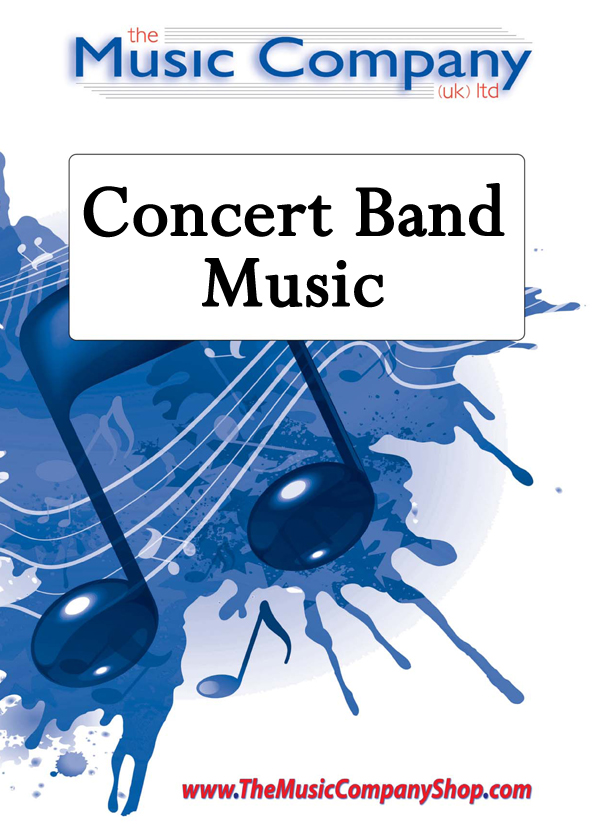 £75.00
£75.00Two Giants and Ten Thousand Stones - Andrew Duncan
A descriptive work by Scottish composer Andrew Duncan telling the dramatic story of the legendary stone throwing fight between Finn McCool and Finn Gael which formed the spectacular basalt columns of the Giants Causway in Ireland and Fingals Cave in Scotland.The piece was commissioned by and written for the the National School Band Association for the NSBA 2005 County Antrim Youth Band Festival, and is scored for large wind orchestra with additional four Bass Drum parts to be played in the four corners of the hall (amongst the audience) to represent the huge stones crashing into the ground.Scored for:Piccolo;1st Flute;2nd Flute;Oboe;Cor Anglais (English Horn);1st Bassoon;2nd Bassoon;Contra Bassoon;Eb Clarinet;1st Bb Clarinet;2nd Bb Clarinet;3rd Bb Clarinet;Bass Clarinet;Soprano Sax;1st Alto Sax;2nd Alto Sax;Tenor Sax;Baritone Sax;1st Bb Trumpet;2nd Bb Trumpet;3rd Bb Trumpet
In stock: Estimated delivery 1-3 days
-
 £248.99
£248.99Elements of Nature - Hermann Pallhuber
Earth - Fire - Water - Air: According to the four element theory of temperaments, earth, fire, air and water are the building blocks of the universe. Without them, life would not exist. They shape our view of the world around us, affect our thoughts and guide our feelings. Classifying our cosmos according to the four elements is probably one of the oldest principles of mankind, dating back to the ancient Greeks, and maybe even before them. While we know more about the elements and atoms, these four are still deeply embedded inthe human psyche. According to ancient Greek philosophers, each of the four elements has its own particular attributes. All other substances in nature aresaid to have emerged from these elements and can be broken down into them.All creatures, including human beings, contain a mixture of these four elements, which shape their senses. The elements are even able to balance out the body and the soul.This suite, Elements of Nature, is in four movements, each corresponding to one of the elements.Dances of Fire: Savage, occult, dangerous - Fire signifies the will of man.The Circle of Water: Flowingly, endless, mighty - Water sums up the feelings of human beings.Planet Earth: Structured, material, fertile - Earth stands for the awareness of the self.Air - The Spirit of Life: Stirring, altering, sensual - Air signifies human intellect.Elements of Nature contains a main theme that combines the female elements (earth and water) with the male elements (fire and air). The four movements are also linked to each other by their motifs. A majestic prologue and an epilogue frame the suite.
Estimated dispatch 7-14 working days
-
 £117.80
£117.80Freedom Defended - Rossano Galante
Inspired by the non-violent civil rights protest of February 1, 1960 against a segregated lunch counter in Greensboro, NC, Freedom Defended strives to encapsulate the story of this now historic event. Commissioned by the band directors of the North Carolina Central District and East Central District Bandmasters Associations, this four movement piece honors each of the North Carolina Agricultural and Technical State University students known as the "Greensboro Four", Joseph McNeil, Franklin McCain, Ezell Blair Jr., and David Richmond. Their actions directly led to the Civil Rights Act of 1964 which mandated desegregation in public spaces. Movement 1 (Da Sogno) - The opening thematic material is dream-like and idyllic as the "Greensboro Four" enter the Woolworth Store at 132 South Elm Street and peacefully sit at the lunch counter and order coffee. Movement 2 (Con Fuoco) - The piece takes a dark turn when they are refused service and are told "We don't serve Negros here". The music is somewhat dissonant and rhythmic but a heroic theme captures the tenacity and courage of these brave young men. Movement 3 (Molto Cantabile) - A plaintiff theme portrays the hopelessness the four freshmen faced as they continued to be refused service until they leave when the store closed that night. Movement 4 (Con Spirito) - Undeterred, the "Greensboro Four" returned the next day, this time joined by more than twenty other black students. While they were again refused service, the sitins began to attract media attention and each day more and more students, both black and white, joined the cause. By February 4th, over 300 students staged sit-ins not only at the Woolworth Store but also the lunch counter at Greensboro's S. H. Kress & Co. The music is rejoicing and uplifting, similar to the opening statement, but now fully orchestrated and more fully developed. Coda - a quiet theme based on the motives from the opening thematic material brings the work to a reflective close as we remember these four men who, in the face of adversity, stood up for equality for all men and women.
Estimated dispatch 7-14 working days
-
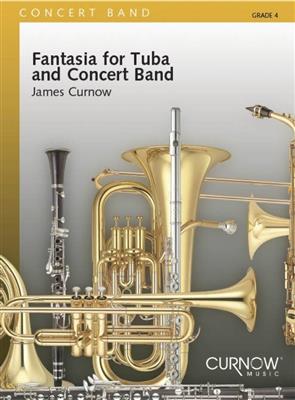 £94.99
£94.99Fantasia for Tuba and Concert Band - James Curnow
The composition begins with the solo tuba stating the four notes (F, Bb, G, C) on which the entire piece is based. All other themes, and much of the harmony, are built on these four notes and their permutations. There are four main sections, with a brief cadenza before the last movement
Estimated dispatch 7-14 working days
-
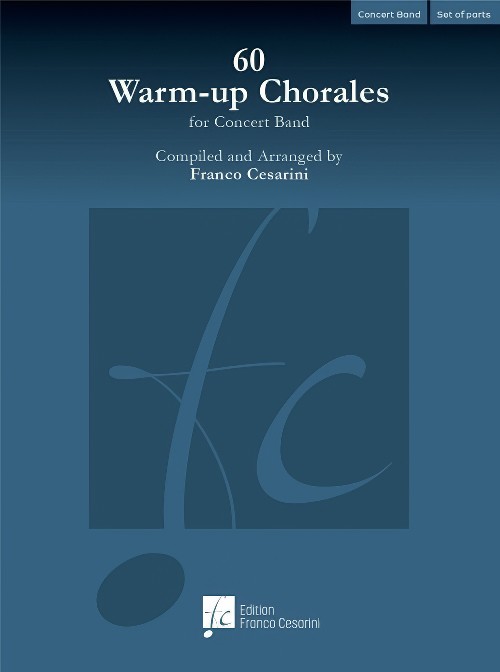 £175.00
£175.0060 Warm-Up Chorales (Concert Band - Score and Parts) - Cesarini, Franco
During his experience as a band conductor and teacher of wind orchestra conducting at university, Franco Cesarini has dealt with the topic of warm-ups very frequently. Throughout these long years of conducting he has had the opportunity to try many existing methods, evaluating their advantages and disadvantages. After a long time, he has decided to compile a collection of chorales for warm-ups, which are organised according to the criteria that he considers most effective. While working on his60 Warm-up Chorales for Concert Band, Franco Cesarini has always borne in mind that amateur musicians play for pleasure. He feels that it is extremely important that they have satisfaction at every moment of the rehearsal and not to start the rehearsal with needless "punishing" exercises. Nobody is really motivated to start playing with scales, long notes, or tricky rhythmical exercises. There is often a distinguished absentee in band rehearsals, namely music itself! Although this publication does not foresee a specific tempo for the chorales, they should often be performed rather slowly but without dragging. Dynamics are not indicated, so that the conductor has the opportunity to draw the attention of the musicians to his gestures and to make them react according to his indications. Timpani and bell parts have been added with the aim of not leaving the percussionists completely inactive during the warm-up phase, but can also be omitted. The chorales are written in four parts (SATB) and are also playable in smaller groups. The four voices can be played in different combinations of woodwinds or brass quartets or in mixed combinations. The collection includes ten chorales for the following keys: D flat major, A flat major, E flat major, B flat major, F major and C major. With his 60 Warm-up Chorales Franco Cesarini would like to convey the message to play the chorales in a musical way, thus raising the musicians' awareness of phrasing, the right interpretation of cadences, rubato and agogic. Above all, never do anything without putting the musical aspect in the foreground. 60 Warm-up Chorales for Concert Band: A perfect collection to warm-up and improve tuning of a concert band!
Estimated dispatch 7-14 working days
-
 £149.99
£149.99Heaven and Earth Wind Band Set (Score & Parts)
An Astrological Composition. Astrology is based on the principle that each sort of time has its own quality. In order to determine the quality of a particular moment, an astrologer looks at the position of the planets in the solar sustem at that moment. Each planet has specific types of energies and its location provides unique information for a certain moment on Earth. Thus: its position in the sky tells something about what happens on Earth. In this composition the types of energies of four planets are musically translated. The four planet were not randomly chosen. There are two pairs, whose influence and energy are opposite. Venus and Mars. Venus represents the feminine principle: harmony, beauty, art, and the ability to make relationships and to keep the peace. Venus connects, and communicates in order to maintain the balance. Mars represent the masculine principle: winning, impulsiveness, enthusiasm, and sexual energy for procreation. He creates war enabling the strongest to triumph. Mars is musically depicted in a stirring march in which enthusiasm characterises the masculine character. Saturn and Jupiter. Saturn represents concentration and withdrawal: the strong notion of responsibility, seriousness, self-discipline and melancholy. Saturn is the hermit who will conquer his fears and worries in minimal conditions and by self-chastisement. This contemplative character is depicted in the music as if it is almost standing still, which also reflects the given character of this planet. Jupiter represents growth and expansion: the positive, self-confidence, the good Samaritan, the healer. Jupiter is the philosopher who will make the world a better place, sees future possibilities, and searches for eternal values. He is the prophet who sometimes rants and raves his doctrine and proclamations, resulting musically in a whirling and upbeat finale. not looking back at what has been but searching for new challenges. "Heaven and Earth" was commisioned by the Music Lending and Information Centre (MUI), a department of the library for the province of Gelderland in Arnhem, The Netherlands.Een astrologische compositie. Astrologie is gebaseerd op het principe dat elke tijd zijn eigen kwaliteit heeft. ""Tijd voor koffie"" of ""het was je tijd nog niet"" als bijvoorbeeld een baan aan je neus voorbij is gegaan. Om de kwaliteit van een moment te lezen kijkt de astroloog naar de stand van de planeten in ons zonnestelsel op dat tijdstip. Elke planeet heeft specifieke energie?n en de plaats aan de hemel geeft unieke informatie over een bepaald moment op aarde. Oftewel: de stand aan de hemel (Ouranos) vertelt iets over wat er op aarde (Gaia) gebeurt. In deze compositie worden de energie?n van vier planeten muzikaal vertaald. De vier planeten zijn niet lukraak gekozen. Het zijn twee paren, die qua invloed en energie tegenovergesteld zijn. Venus en Mars. Venus vertegenwoordigt het vrouwelijke principe: harmonieus, schoonheid, de kunst, het vermogen om verbindingen aan te gaan en de vrede te bewaren. Venus geeft door en verbindt om de balans te bewaren. Mars vertegenwoordigt het mannelijke principe: winnen, anderen aftroeven, impulsief en enthousiast, seksuele energie voor de voortplanting. Mars cre?ert oorlog om de sterkste te laten zegevieren. Venus staat tot Mars als vrede staat tot oorlog, als verbinden staat tot verbreken, als harmonie staat tot competitie. Jupiter en Saturnus. Jupiter vertegenwoordigt groei en expansie: het positieve zelfvertrouwen, de weldoener, de genezer. Jupiter is de filosoof die de wereld wil verbeteren, vooruitkijkend en zoekend naar eeuwige waarden, de profeet die soms al te bombastisch zijn leer verkondigt. Saturnus vertegenwoordigt concentratie en inkrimping: het sterke verantwoordelijkheidsbesef, soberheid, zelfdiscipline en melancholie. Saturnus is de kluizenaar die onder minimale voorwaarden en zelfkastijding zijn angsten wil overwinnen. De harde, serieuze werker die volgens vaste regels stug doorgaat om aan zijn hoge eisen te voldoen. Jupiter staat tot Saturnus als uitbreiding staat tot inkrimping, als zelfvertrouwen staat tot faalangst, als vrijheid staat tot structuur. 11:00
Estimated dispatch 7-14 working days
-
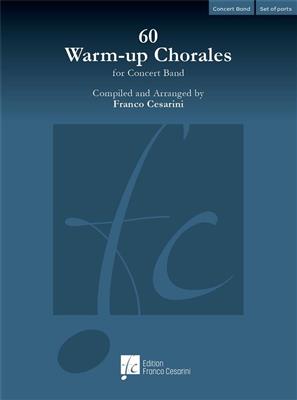 £168.50
£168.5060 Warm-up Chorales for Concert Band
During his experience as a band conductor and teacher of wind orchestra conducting at university, Franco Cesarini has dealt with the topic of warm-ups very frequently. Throughout these long years of conducting he has had the opportunity to try many existing methods, evaluating their advantages and disadvantages.After a long time, he has decided to compile a collection of chorales for warm-ups, which are organized according to the criteria that he considers most effective.While working on his60 Warm-up Chorales for Concert Band, Franco Cesarini has always borne in mind that amateur musicians play for pleasure.He feels that it is extremely important that they have satisfaction at every moment of the rehearsal and not to start the rehearsal with needless "punishing" exercises. Nobody is really motivated to start playing with scales, long notes, or tricky rhythmical exercises. There is often a distinguished absentee in band rehearsals, namely music itself!Although this publication does not foresee a specific tempo for the chorales, they should often be performed rather slowly but without dragging.Dynamics are not indicated, so that the conductor has the opportunity to draw the attention of the musicians to his gestures and to make them react according to his indications.Timpani and bell parts have been added with the aim of not leaving the percussionists completely inactive during the warm-up phase, but can also be omitted.The chorales are written in four parts (SATB) and are also playable in smaller groups. The four voices can be played in different combinations of woodwinds or brass quartets or in mixed combinations.The collection includes ten chorales for the following keys: D flat major, A flat major, E flat major, B flat major, F major and C major.With his 60 Warm-up Chorales Franco Cesarini would like to convey the message to play the chorales in a musical way, thus raising the musicians' awareness of phrasing, the right interpretation of cadences, rubato and agogic.Above all, never do anything without putting the musical aspect in the foreground. 60 Warm-up Chorales for Concert Band: A perfect collection to warm-up and improve tuning of a concert band!
Estimated dispatch 7-14 working days
-
 £149.99
£149.99Heaven and Earth - Jan Bosveld
An Astrological Composition. Astrology is based on the principle that each sort of time has its own quality. In order to determine the quality of a particular moment, an astrologer looks at the position of the planets in the solar sustemat that moment. Each planet has specific types of energies and its location provides unique information for a certain moment on Earth. Thus: its position in the sky tells something about what happens on Earth. In this composition the typesof energies of four planets are musically translated. The four planet were not randomly chosen. There are two pairs, whose influence and energy are opposite. Venus and Mars. Venus represents the feminine principle: harmony, beauty,art, and the ability to make relationships and to keep the peace. Venus connects, and communicates in order to maintain the balance. Mars represent the masculine principle: winning, impulsiveness, enthusiasm, and sexual energy for procreation.He creates war enabling the strongest to triumph. Mars is musically depicted in a stirring march in which enthusiasm characterises the masculine character. Saturn and Jupiter. Saturn represents concentration and withdrawal: the strongnotion of responsibility, seriousness, self-discipline and melancholy. Saturn is the hermit who will conquer his fears and worries in minimal conditions and by self-chastisement. This contemplative character is depicted in the music as if it isalmost standing still, which also reflects the given character of this planet. Jupiter represents growth and expansion: the positive, self-confidence, the good Samaritan, the healer. Jupiter is the philosopher who will make the world a betterplace, sees future possibilities, and searches for eternal values. He is the prophet who sometimes rants and raves his doctrine and proclamations, resulting musically in a whirling and upbeat finale. not looking back at what has been but searchingfor new challenges. "Heaven and Earth" was commisioned by the Music Lending and Information Centre (MUI), a department of the library for the province of Gelderland in Arnhem, The Netherlands.Een astrologische compositie. Astrologie is gebaseerd op het principe dat elke tijd zijn eigen kwaliteit heeft. ""Tijd voor koffie"" of ""het was je tijd nog niet"" als bijvoorbeeld een baan aan je neus voorbij is gegaan. Om de kwaliteit van een moment te lezen kijkt deastroloog naar de stand van de planeten in ons zonnestelsel op dat tijdstip. Elke planeet heeft specifieke energien en de plaats aan de hemel geeft unieke informatie over een bepaald moment op aarde. Oftewel: de stand aan de hemel (Ouranos) verteltiets over wat er op aarde (Gaia) gebeurt. In deze compositie worden de energien van vier planeten muzikaal vertaald. De vier planeten zijn niet lukraak gekozen. Het zijn twee paren, die qua invloed en energie tegenovergesteldzijn. Venus en Mars. Venus vertegenwoordigt het vrouwelijke principe: harmonieus, schoonheid, de kunst, het vermogen om verbindingen aan te gaan en de vrede te bewaren. Venus geeft door en verbindt om de balans te bewaren. Marsvertegenwoordigt het mannelijke principe: winnen, anderen aftroeven, impulsief en enthousiast, seksuele energie voor de voortplanting. Mars creert oorlog om de sterkste te laten zegevieren. Venus staat tot Mars als vrede staat tot oorlog, alsverbinden staat tot verbreken, als harmonie staat tot competitie. Jupiter en Saturnus. Jupiter vertegenwoordigt groei en expansie: het positieve zelfvertrouwen, de weldoener, de genezer. Jupiter is de filosoof die de wereld wilverbeteren, vooruitkijkend en zoekend naar eeuwige waarden, de profeet die soms al te bombastisch zijn leer verkondigt. Saturnus vertegenwoordigt concentratie en inkrimping: het sterke verantwoordelijkheidsbesef, soberheid, zelfdiscipline enmelancholie. Saturnus is de kluizenaar die onder minimale voorwaarden en zelfkastijding zijn angsten wil overwinnen. De harde, serieuze werker die volgens vaste regels stug doorgaat om aan zijn hoge eisen te voldoen. Jupiter staat tot Saturnusals uitbreiding staat tot inkrimping, als zelfvertrouwen staat tot faalangst, als vrijheid staat tot structuur.
Estimated dispatch 7-14 working days
-
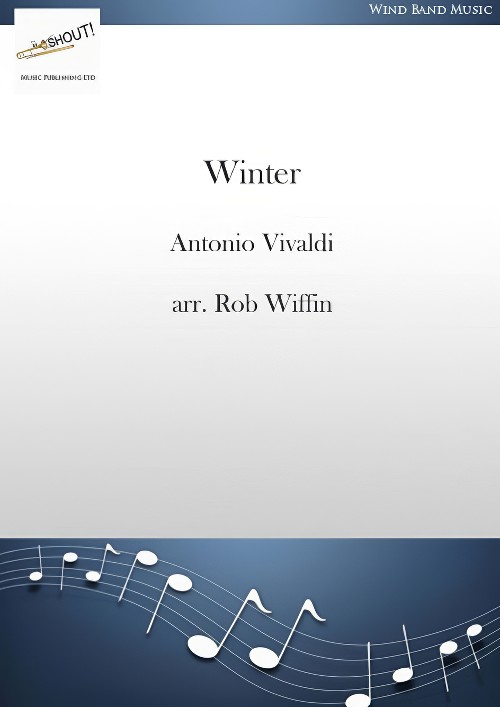 £36.95
£36.95Winter (Concert Band - Score and Parts) - Vivaldi, Antonio - Wiffin, Rob
An arrangement of a slow movement from Vivaldi?€s The Four Seasons. Vivaldi?€s The Four Seasons concertos (1723) remain hugely popular. This straightforward arrangement is of the Largo from Concerto No. 4 in F minor, Op. 8, RV 297, L'inverno (Winter). Vivaldi described the feeling of this music as ?€To rest contentedly beside the hearth, while those outside are drenched by pouring rain?€. Duration: 2.35
Estimated dispatch 7-14 working days
-
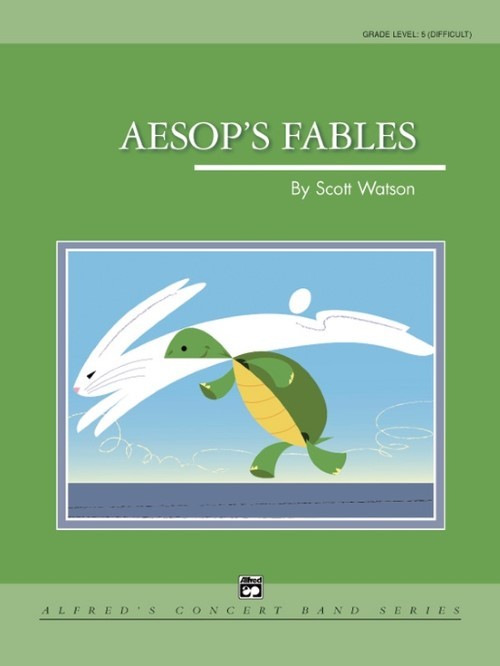 £87.50
£87.50Aesop's Fables (Narrator with Concert Band - Score and Parts) - Watson, Scott
Aesop's Fables, for narrator and band, musically portrays four tales attributed to the ancient moralist. The four movements are based on The Hare and the Tortoise, The Boy Who Cried Wolf, The Dog and the Bone and The Wolf and His Shadow. Dynamic and highly dramatic!Duration: 9:45
Estimated dispatch 7-14 working days
